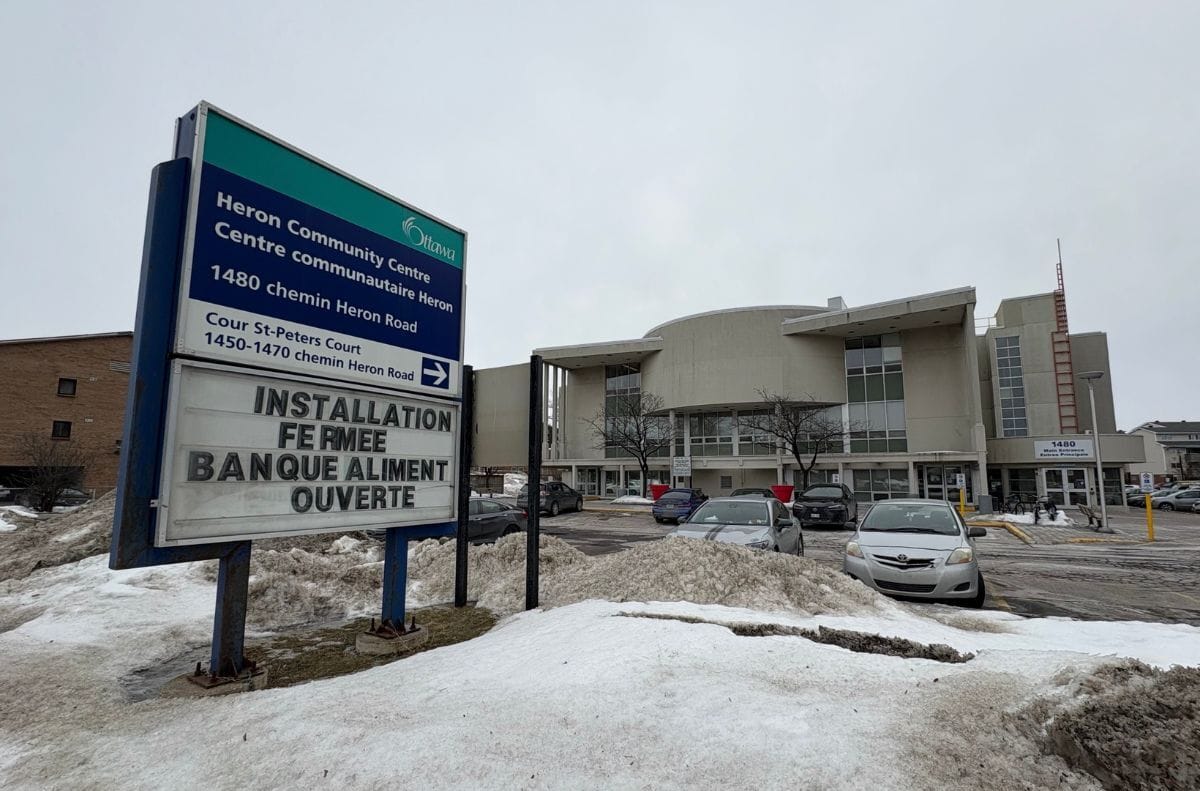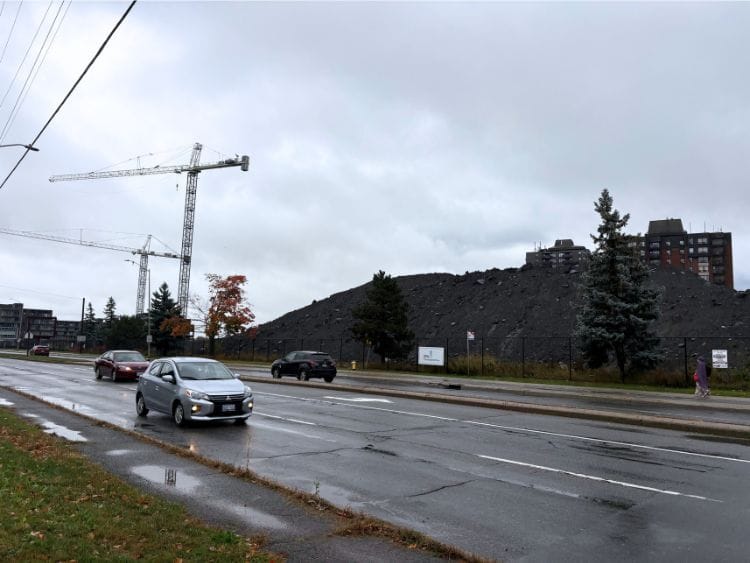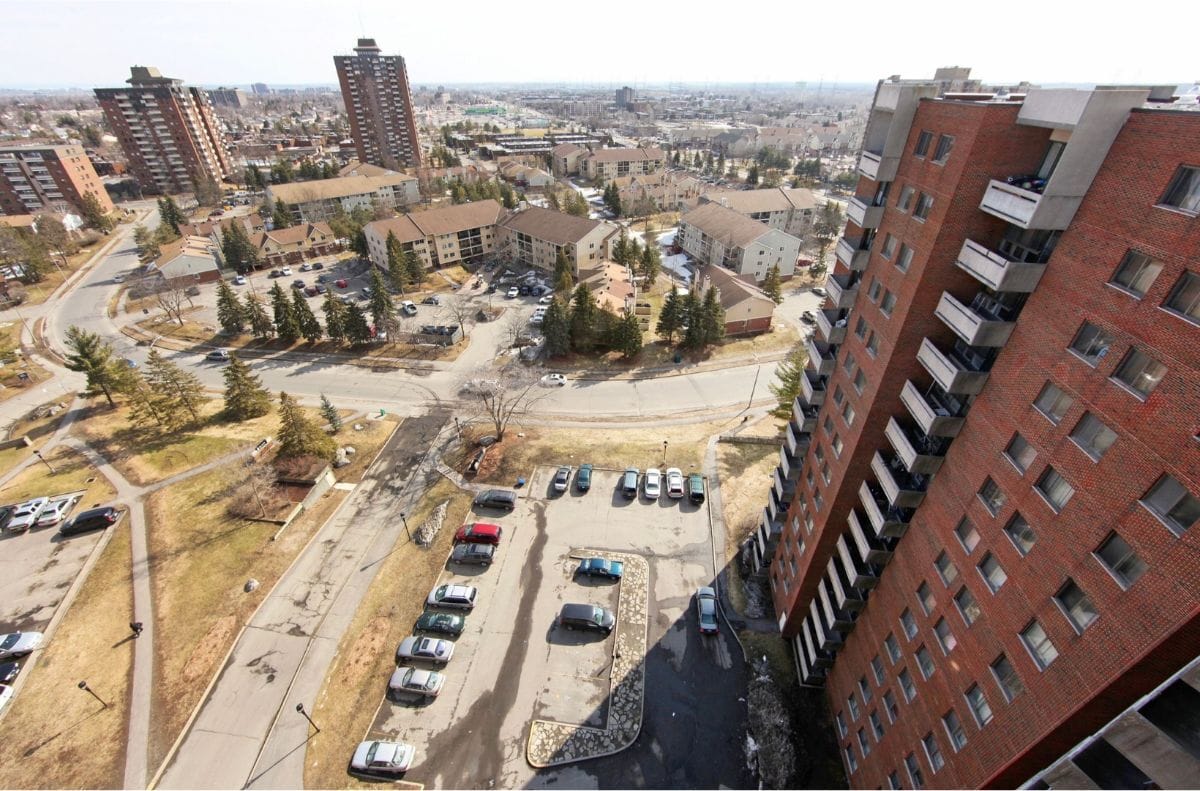Growing up in the Heron Gate neighbourhood seemed idyllic. My sister and I would ride our bikes for hours around the community and visit the Quickie to buy candy. In the summer, we would swim at the pool and run in groups with our friends, playing hide-and-seek.
The house I lived in is now gone, demolished to make way for new development. The park is still there, but is now flanked by sparkling new, white apartment buildings along Heron Road. The shopping plaza has been updated with new stores like Pet Smart and Food Basics.
This is a story of redevelopment and infill, but it is also a story of a neighbourhood facing challenges and inequity.
The community serves as a gathering place for new Canadians and young families. It has also been the subject of a human rights complaint launched in 2019 against the City of Ottawa and the landlord after 500 people were forced from their homes when they were evicted to make way for new development.
At that time, the developer demolished 150 homes it said had deteriorated beyond repair. (A representative from the landlord declined to comment as the case is before the tribunal, but said it is “without merit.”)
On a recent morning, neighbourhood traffic flowed as people headed to school and work. There is a stark contrast between the new, white construction and the old, boxy, brown buildings that were built in the 1960s. The park was deserted but for a few men sitting on benches by the basketball courts. The new buildings are well-kept, and on this morning, several people, and even dogs, were sitting out on their balconies overlooking the park.
City councillor Marty Carr, in whose ward Heron Gate sits, says like other neighbourhoods in her constituency and across the city, residents are struggling.
“People are worried about making ends meet on a daily basis,” says Carr, adding that there has been a rise in food insecurity in the neighbourhood.
Indeed, Heron Gate sits at the bottom of several 2024 markers from the Social Planning Council of Ottawa’s Neighbourhood Equity Index. These markers are measured against other neighbourhoods and are based partly on data from Statistics Canada.
The markers include household income, employment quality, educational attainment, housing pressures, barriers to access and some administrative health and safety indicators.
“Heron Gate ranks lower because multiple indicators point in the same direction; in other words, several measures show outcomes that are comparatively worse than the city average, which together push its composite score down,” a representative from the Social Planning Council of Ottawa said.
In an attempt to assist residents who are facing tough times, there is a concentration of community and social resources, including the Heron Emergency Food Centre, Ottawa Community Immigrant Services Organization, the Walkley Employment Centre, Catholic Centre for Immigrants, the Boys and Girls Club and the Somali Centre for Family Services. These organizations provide everything from language lessons to emergency food provisions to help find employment.
The Heron Road Community Centre, which served as an emergency shelter for nearly two years, will also reopen, and programs for seniors will be reintroduced.

The Heron Community Centre is being returned to neighbourhood use after being used as a centre to house newcomers and refugees. Photo by Charlie Senack.
The community is also banding together to identify ways to maintain harmony as developers build out their plans for the neighbourhood; in 2015, the Heron Gate Steering Table was formed following a community needs assessment and asset mapping exercise. The exercise was led by South-East Ottawa Community Health Centre and funded by Crime Prevention Ottawa, according to a written response from Hazelview Properties’ John Loubser, senior vice-president of operations.
Prior to rebranding as Hazelview Investments, the company was known as Timbercreek Equities Corp., which was responsible for demolishing the units related to the human rights challenge.
The goal of the steering table, said Loubser, is “to foster collaboration and build partnerships that drive positive change and respond to the evolving and diverse needs of Heron Gate residents.”
In addition to the establishment of the Steering Table, Hazelview signed a legally binding Memorandum of Understanding with the City of Ottawa in 2021. The social framework says it must build a certain amount of affordable housing relative to new construction and not displace current residents to make way for new housing “unless affected tenants can relocate to newly constructed equivalent units at the same rent.”
“Affected residents may also be given the additional option to relocate to newly renovated, similar sized units at the same rent in retained buildings,” the agreement states. The agreement also states that Hazelview will commit to 1,020 affordable units, as well as construct 10 per cent of developments in new units that will be designated as affordable.
Hazelview currently manages approximately 1,860 homes and suites in Heron Gate, which house 3,500 people. According to Loubser, “230 homes have been demolished as part of the long-term master plan for the community, which will see [more than] 5,000 much needed new housing added to the greater Ottawa South area.”
He says construction is currently underway for 307 new rental homes of which 10 per cent will be designated affordable. Loubser adds that to date, the company has developed 348 new rental suites.
The big picture
In September 2021, City Council approved the Heron Gate Secondary Plan with the aim to guide development on roughly 21 hectares of land in the Heron and Walkley Road area over the next 20-25 years.
Once complete, the redeveloped Heron Gate would have around 6,400 residential units. That includes around 1,300 existing apartment and low rise units, and upwards of 5,500 new units in the form of townhouses, stacked townhouses, mid-rise apartments, and high-rise apartments. Some of these are encompassed by the Hazelview development.
Building heights will vary from 2-26 storeys and many of the units will be three or four bedrooms to provide diverse accommodation to large families. Units on the ground floor will be made accessible for people with mobility issues.
Some of the buildings will also include retail or commercial services on the ground floor.

Construction crews have broken ground on Phase 1 of the project. Photo by Charlie Senack.
There is a commitment for 1,020 of the units to be considered affordable — roughly 20 per cent of the new builds to be allocated. There is to be no demolition of current units unless the existing tenants are given equivalent or renovated units at the same rent.
The plan includes a new 1.6 hectare public park and multiple smaller “parkettes,” green connectors, landscaped areas, and linkages to existing parks. New private roads will be built around the green space to provide better connectivity.
Construction for the first phase began in May 2025 on the land located at the corner of Heron Road and Sandalwood Drive.
According to Loubser, the accomplishments of the Steering Table include increased access to services, the establishment of the Heron Gate Community Hub, an on-site resource for residents, and strengthened emergency response capacity for incidents such as wellness checks and vaccination clinics.
Participants in the Table include community groups, the City of Ottawa and public services like police and the library. Carr says the Steering Table has been effective in keeping people apprised of both needs and resources.
The Heron Emergency Food Centre is a participant in the Steering Table. Chair of the board of directors Lynn Sherwood says poverty and being displaced from their homes in other countries affect many of the people who access her organization.
Between 2,400 and 2,800 people or 800 families access the food centre on a monthly basis, a number that has doubled since the pandemic, Sherwood said. And while the organization usually has enough food to serve those in need, it has run out of space and is negotiating with the City of Ottawa for a bigger venue.

Drawings show what part of the Herongate development could look like. Handout photo.
Carr reiterates that there is a concentration of newcomers to Canada, which contributes to reports of food insecurity. “It is a newcomer population in the older builds,” Carr says.
Sherwood says that by her count, her organization serves a clientele in which 16 different languages are represented.
“We are also seeing a lot of people with mental health issues,” she said. “And a lot of disabled people and chronic low-income people.”
For its part, the developer acknowledges the challenges faced by residents.
“We understand the financial pressures many Heron Gate residents face and are committed to offering meaningful support through direct programs and partnerships with trusted community organizations,” Loubser told Ottawa Lookout.
These programs include hiring 14 youth for summer employment, rental aid, and assistance in funding the youth club.
As the community undergoes change and development, the Steering Table and the social contract signed by the developer are essential as tools to maintain the vibrancy of the multicultural community, Carr says.
True neighbourhood journalism, that’s our mission here at the Lookout. Our goal by Dec. 31 is 300 new members to fund the biggest expansion in our history — launching a new neighbourhood news bureau somewhere in Ottawa.
This story you just read is what we want to do in communities across the city. But as a mostly reader-funded publication (in fact, around 80 per cent of our revenue comes from local Ottawa readers), this expansion is only possible if readers like you become members.
(And don’t worry, nothing is changing with our current newsletter).




